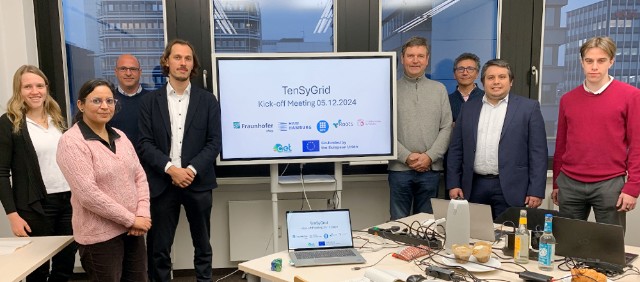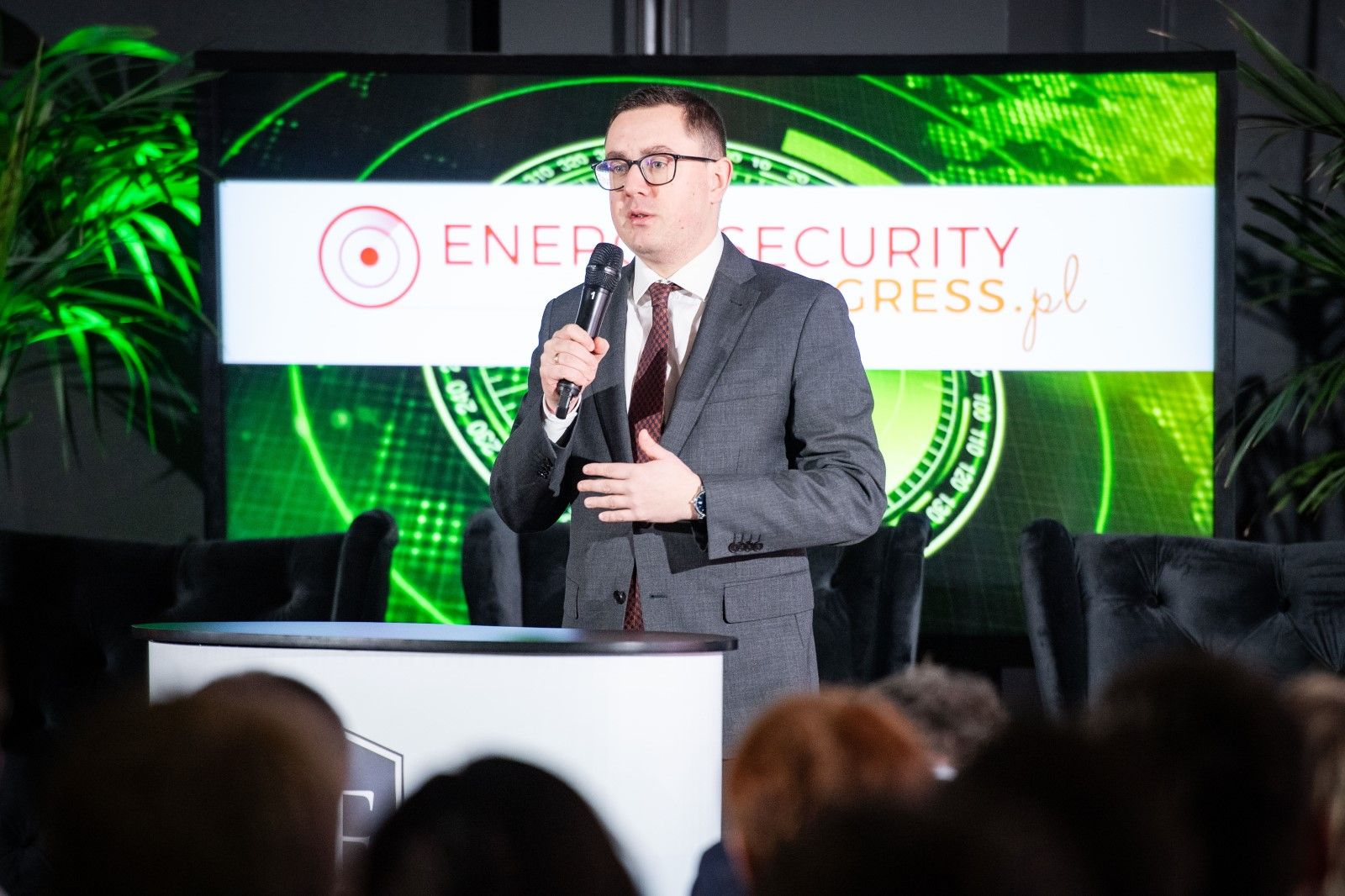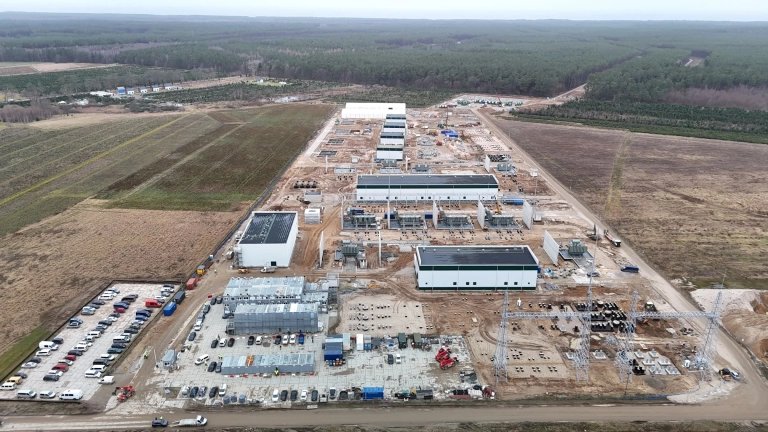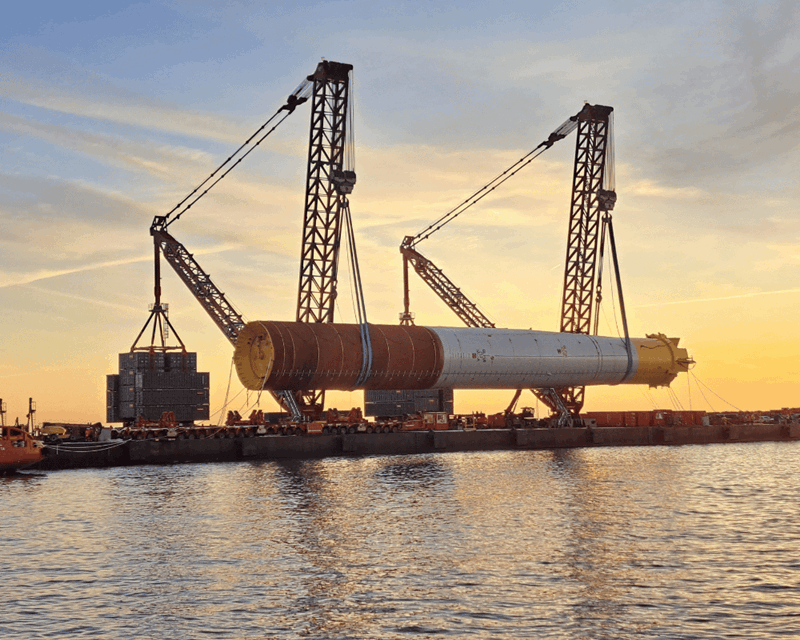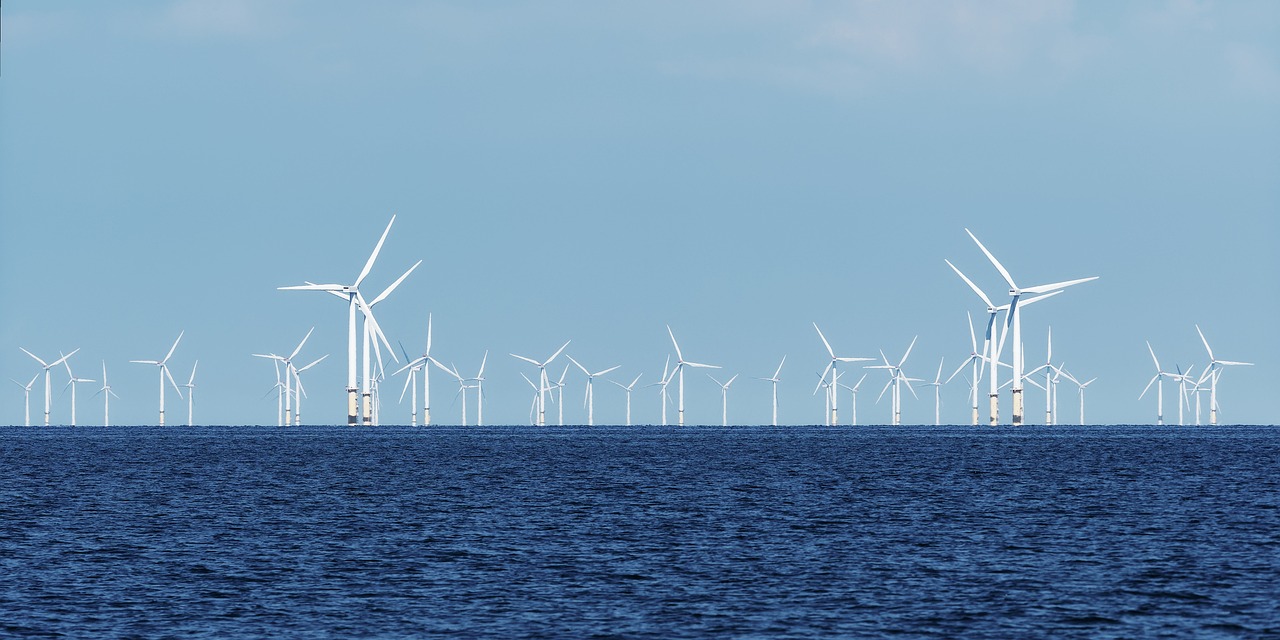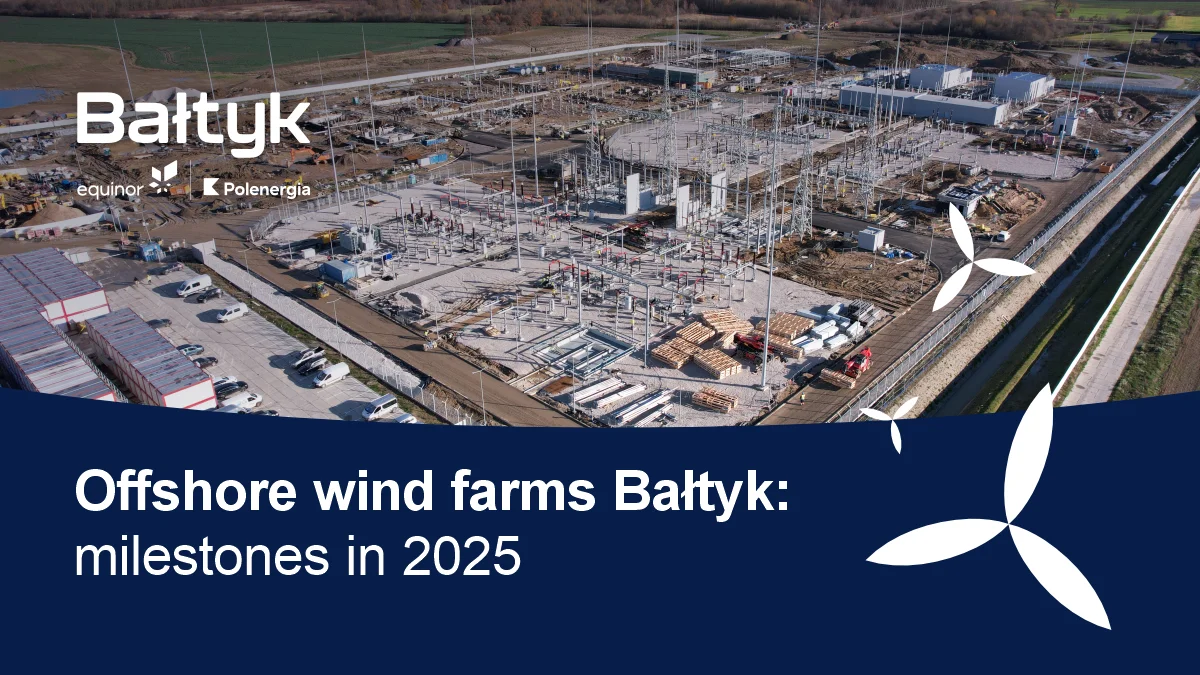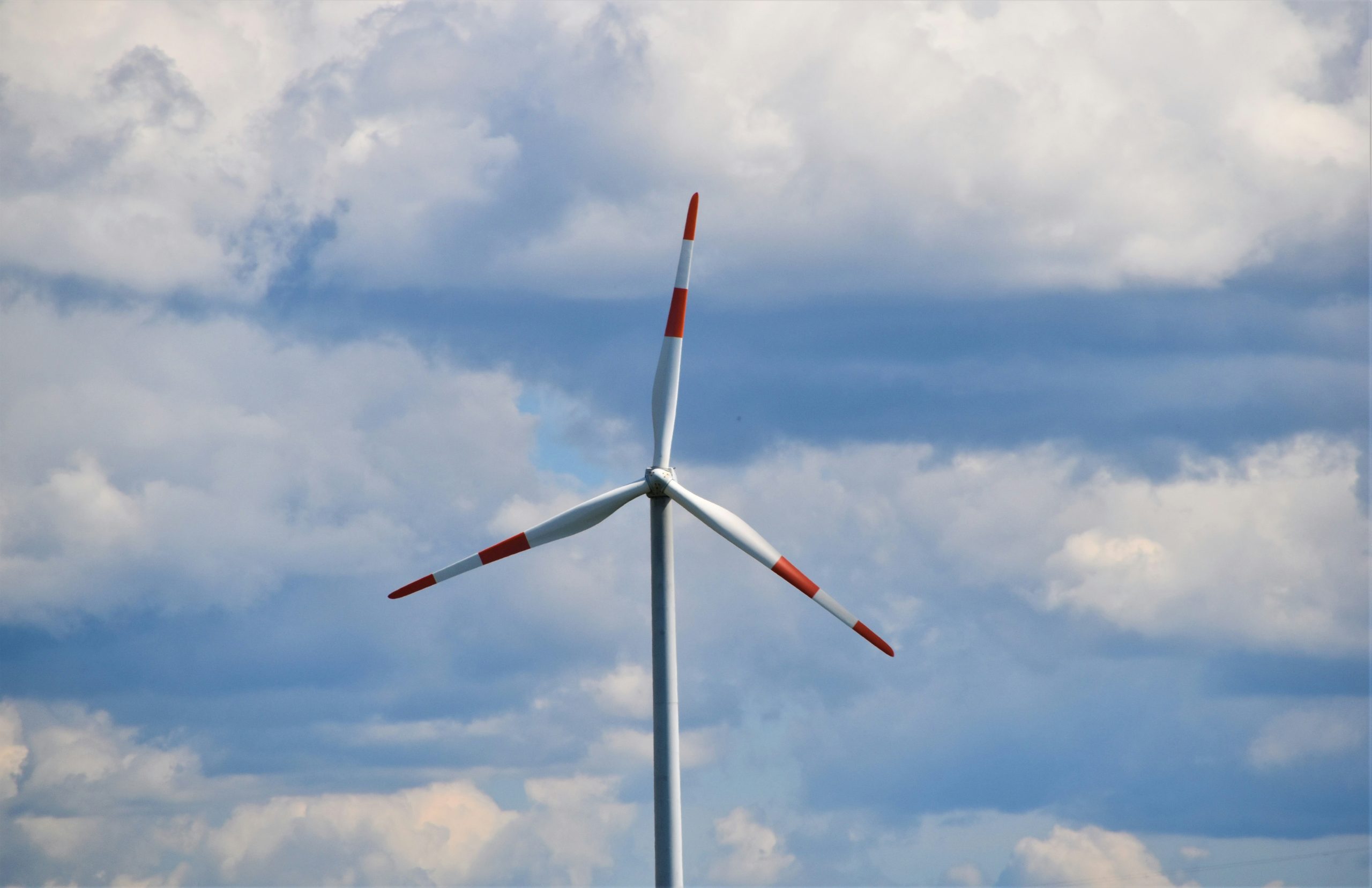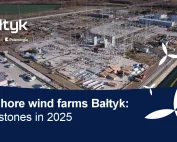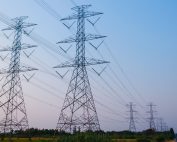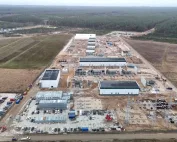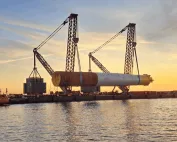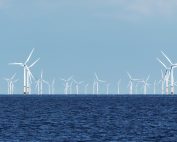The demand of the power grid in Europe is undergoing profound changes: An increasing number of decentralized feed-in points and the fluctuating supply from renewable energies are making the interactions between power grid components more complex, posing a challenge for preserving the system stability. That is why in the TenSyGrid project, Fraunhofer Institute for Wind Energy Systems IWES, Universitat Politècnica de Catalunya – BarcelonaTech (UPC), eRoots Analytics, Hamburg University of Applied Sciences (HAW), and University of Malta (UM), are developing a toolbox for direct stability assessment using multilinear models to capture the complex dynamics of power grid components. The objective is to support grid operators in assessing large power grids mainly powered by renewable energy. The toolbox should be compatible with existing commercial software packages to facilitate integration into existing workflows. The project started in December 2024 and is funded by BMWK Germany, MICIU, AEI, CDTI Spain and XJENZA Malta as part of the EU initiative Clean Energy Transition Partnership (CETP).
The higher share of renewable energies in the distribution and transmission grid structures increases the requirements for grid integration. Traditional approaches that use simplified power grid simulations cannot map the fast transient behavior of power electronics used on large-scale renewable sources. As a result, there are uncertainties regarding the resulting energy system dynamics of converter-dominated networks with low inertia. Conservative limits are set as a precautionary measure to ensure stable operation. These limits constrain the expansion of renewable energy sources.
Currently, only simulations can take all scenarios into account. However, the electromagnetic transient model (EMT) simulations used for this purpose are computationally intensive since several hundred scenarios must be considered in each case. Thus, EMT simulations of large-scale networks are currently not practical.
The TenSyGrid (Tensors for System Analysis of Converter-dominated Power Grids) is a joint research project that aims to support these EMT studies using multilinear models. Universitat Politècnica de Catalunya – BarcelonaTech (UPC), eRoots Analytics (eRoots), Hamburg University of Applied Sciences (HAW), University of Malta (UM) and Fraunhofer IWES, as the project coordinator, are combining their expertise for this purpose. At the project kick-off in December 2024, the partners discussed their perspectives and aims for the project.

© Fraunhofer IWES
Dr. Carlos Cateriano Yáñez, project coordinator at Fraunhofer IWES, explains: “The project will ensure that the modeling framework for very large power systems is scalable and easily updatable to reflect ongoing changes in the grid. Ultimately, TenSyGrid aims to develop tools that can be seamlessly integrated into existing commercial software.” This will make the new methods accessible to operators without the need for significant changes to current systems.
Prof. Eduardo Prieto-Araujo, project coordinator at UPC, states: “Future power systems will be radically different from the traditional networks of previous decades. The massive integration of power electronics-based renewable generation, storage, and loads is profoundly transforming modern power systems. To address this evolution, we need advanced tools capable of reliably and efficiently modeling and analyzing these networks. Multilinear systems present an interesting alternative for accurately capturing the characteristics of modern power systems, offering innovative methods to support real-time operation of power networks.”
M.Sc. Josep Fanals i Batllori, CEO and the principal investigator at eRoots, highlights the opportunities that can emerge from multilinear models: “While power system stability studies have traditionally been characterized by computationally intensive dynamic simulations, multilinear models, coupled with innovative analytic algorithms, have the potential to redefine how such studies are performed. Power systems can thus become fertile ground for applying the fundamental mathematical concepts underpinning TenSyGrid, as their underlying nonlinear equations resemble a multilinear format.” TenSyGrid presents not only captivating challenges but also the potential to produce a transformative tool for the industry.
At HAW, Prof. Gerwald Lichtenberg is looking forward to this project: “After next to 10 national projects where the approach to multilinear modeling has been developed, extended and successfully applied to various problems like controller design, anomaly detection or fault diagnosis especially in the area of energy systems, TenSyGrid will not only give the opportunity to share and spread these methods broader in Europe, but also to sharpen them for the special needs of power grids.”
Prof. John Licari, project coordinator at UM, emphasizes: “The integration of renewable energy systems into power networks presents significant challenges for network operators. The intermittent nature of renewable sources and the introduction of power electronics converters necessitate advanced solutions to ensure reliable grid performance. Having alternative innovative fast and accurate modeling tools will facilitate the operation of power networks by identifying potential issues before they escalate. This transformative technology will empower operators to navigate the complexities of renewable integration, enhancing grid resilience and paving the way for a sustainable energy future.”
Compared to classic EMT simulation, the TenSyGrid project is taking a completely new approach: the power grid is mapped as a multilinear model using tensors. These models can represent the relevant phenomena of converter-dominated power grids but are significantly less computationally intensive than classical models. At the same time, they are highly interpretable. Using this innovative multilinear framework, TenSyGrid aims to enable the real-time stability assessment of power grids to an extent that has not been possible before.
Source: Fraunhofer Institute for Wind Energy Systems
